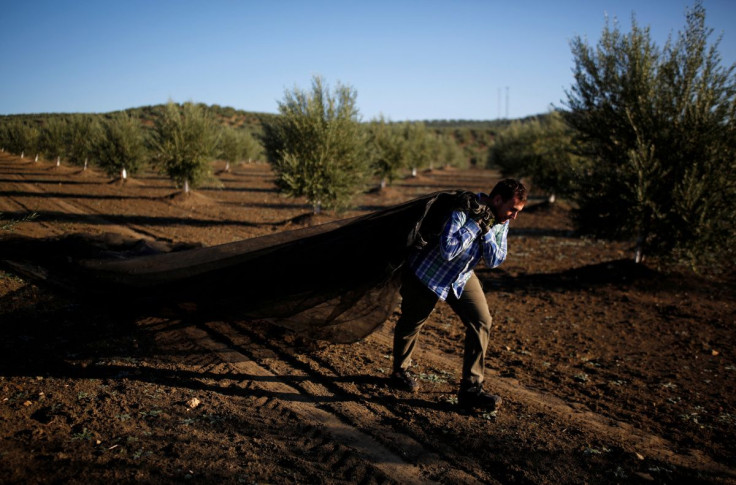Spanish Farmers Fear Olive Oil Output Could Plunge A Third

Farmers in southern Spain fear extreme drought and consecutive heatwaves this year could cut olive oil output in the world's largest producer by nearly a third in the 2022/23 season.
ASAJA, an association of young farmers in the main olive-growing region of Andalusia, estimated this week that Spain would produce about 1 million tonnes of olive oil, down from 1.48 million tonnes pressed in the 2021/22 harvest, according to the latest official data from May.
Primitivo Fernandez, head of the National Association of Edible Oil Bottlers, who cited this estimate in a phone conversation with Reuters, said it was too early to forecast the exact impact, "but it is almost certain that we will produce less than last year's harvest."
Little rain in the spring means water reservoirs are emptier than usual, while in some areas high temperatures have affected olive trees in full bloom, he said.
Environment Ministry data shows Spain's dams are at 40.4% of their capacity, below the average of about 48.5% over the last decade.
Still, Fernandez said Spain's stock of over 500,000 tonnes of olive oil could offset the production drop for both foreign and domestic markets.
Climate change has left parts of the Iberian peninsula at their driest in 1,200 years, and winter rains are expected to diminish further, a study published last month by the Nature Geoscience journal showed, making the agricultural sectors in Spain and Portugal among the most challenged in Europe.
Although farmers have increased the planting area for sunflower crops by 25% to boost sunflower oil output after imports from Ukraine were interrupted by the Russian invasion, Fernandez warned the weather could affect these crops too.
Ukrainian sunflower oil used to make up 400,000 tonnes, or around 40%, of Spain's imports of the product, to supplement local production of 300,000 tonnes.
© Copyright Thomson Reuters 2024. All rights reserved.





















